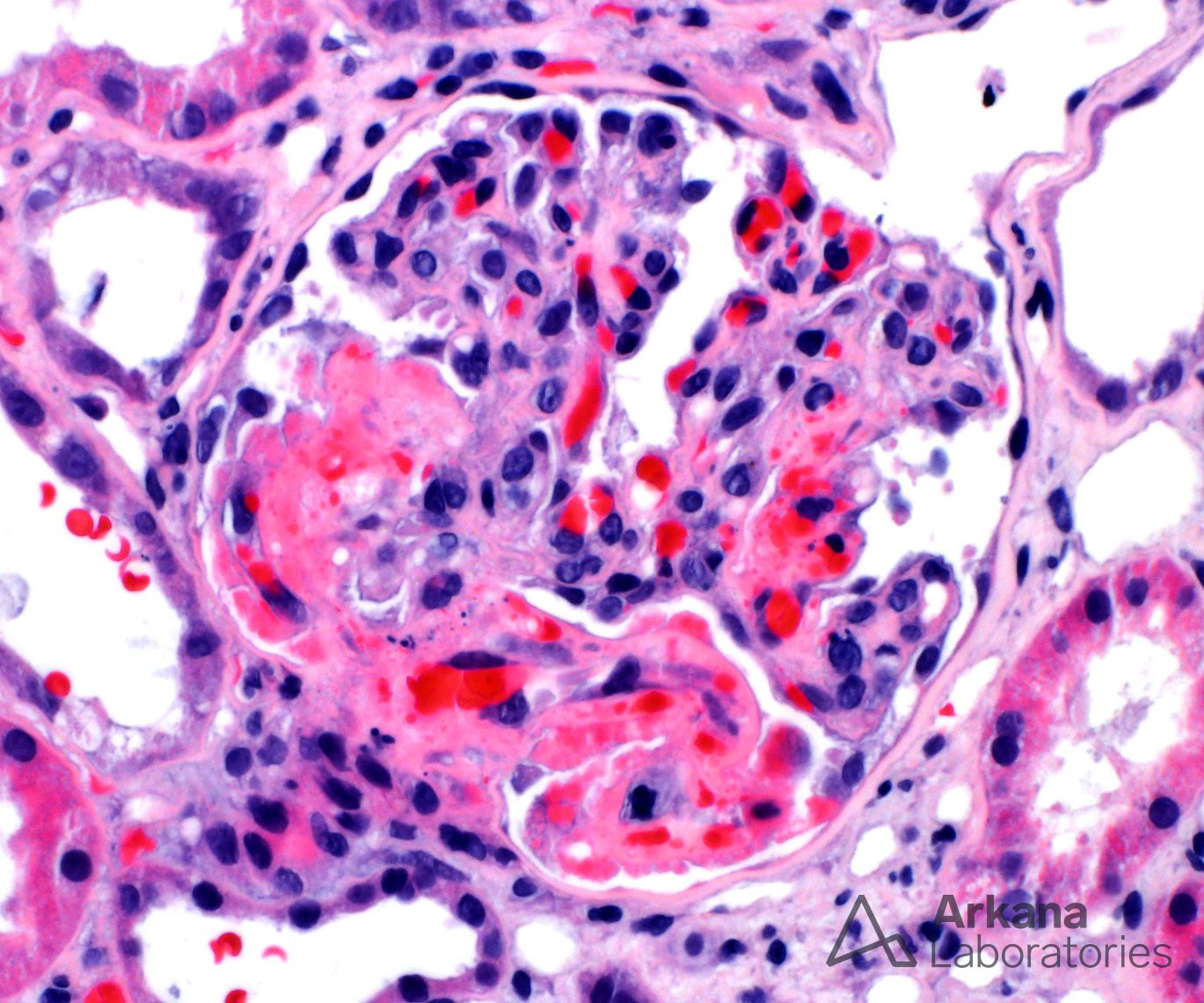Postpartum hemolytic uremic syndrome
This 22-year-old Caucasian female presented with acute renal failure and proteinuria five days after delivering her first child. The pregnancy was uneventful. Serum creatinine at presentation was 6.2 mg/dL (baseline of 0.8 mg/dL), hemoglobin 2.5 g/dL, platelets 22,000 and LDH 2300 U/L.
The biopsy shows glomeruli with endocapillary fibrin thrombi, associated with segmental mesangiolysis and red blood cell fragmentation. These findings are diagnostic of a thrombotic microangiopathy (TMA). Numerous etiologies may lead to a TMA, all of which show morphologic overlap with no morphologic finding specific for a single etiology.
Given the clinical history and the timing of disease presentation in relation to delivery, a postpartum hemolytic uremic syndrome diagnosis is favored. Patients affected by this disorder show a high incidence of mutations in genes involved in regulation of the alternative pathway of complement, leading to persistent activation by C3 convertase.

Quick note: This post is to be used for informational purposes only and does not constitute medical or health advice. Each person should consult their own doctor with respect to matters referenced. Arkana Laboratories assumes no liability for actions taken in reliance upon the information contained herein.


